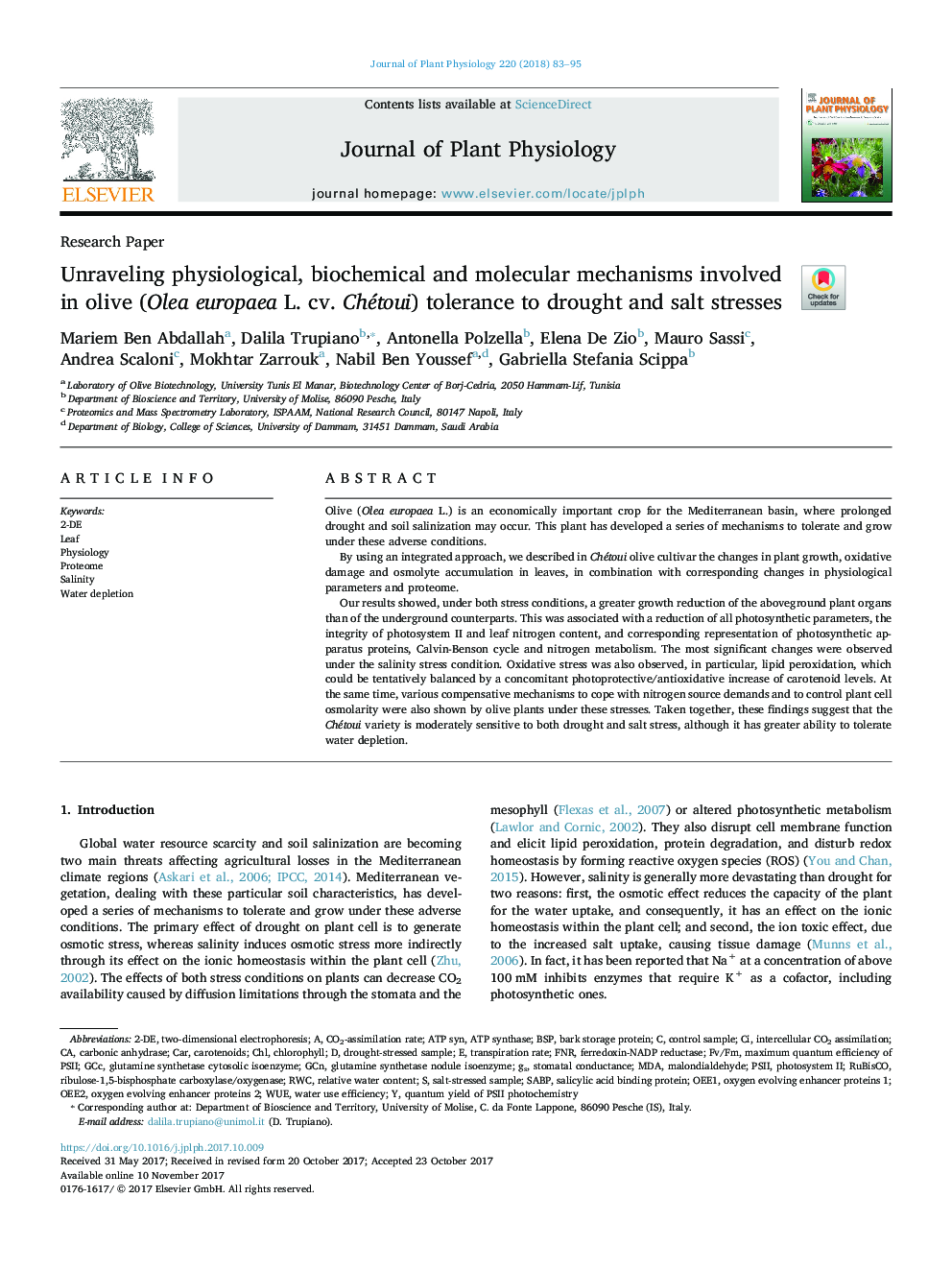| Article ID | Journal | Published Year | Pages | File Type |
|---|---|---|---|---|
| 8387012 | Journal of Plant Physiology | 2018 | 13 Pages |
Abstract
Our results showed, under both stress conditions, a greater growth reduction of the aboveground plant organs than of the underground counterparts. This was associated with a reduction of all photosynthetic parameters, the integrity of photosystem II and leaf nitrogen content, and corresponding representation of photosynthetic apparatus proteins, Calvin-Benson cycle and nitrogen metabolism. The most significant changes were observed under the salinity stress condition. Oxidative stress was also observed, in particular, lipid peroxidation, which could be tentatively balanced by a concomitant photoprotective/antioxidative increase of carotenoid levels. At the same time, various compensative mechanisms to cope with nitrogen source demands and to control plant cell osmolarity were also shown by olive plants under these stresses. Taken together, these findings suggest that the Chétoui variety is moderately sensitive to both drought and salt stress, although it has greater ability to tolerate water depletion.
Keywords
RWCquantum yield of PSII photochemistrymaximum quantum efficiency of PSIIMDAcontrol sampleGCNFNRSABPGCCBSPChl2-DEPSIIRuBisCOWUEATP synthaseFv/Fmribulose-1,5-bisphosphate carboxylase/oxygenaseTwo-dimensional electrophoresisLeafWater use efficiencyChlorophyllSalinityPhotosystem IIPhysiologyCARmalondialdehydeRelative water contenttranspiration rateStomatal conductanceProteomeCarotenoidsWater depletionCarbonic anhydrase
Related Topics
Life Sciences
Agricultural and Biological Sciences
Agronomy and Crop Science
Authors
Mariem Ben Abdallah, Dalila Trupiano, Antonella Polzella, Elena De Zio, Mauro Sassi, Andrea Scaloni, Mokhtar Zarrouk, Nabil Ben Youssef, Gabriella Stefania Scippa,
